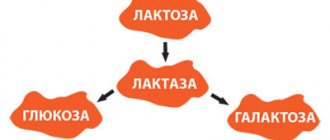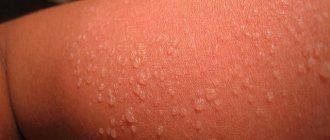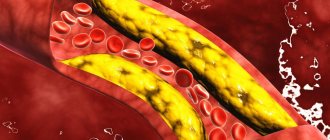Iodine is a vital element that is part of thyroid hormones. Testing serum iodine levels can be used as an indicator of adequate intake or iodine overload, especially when using iodine-containing medications. Excess iodine, like its deficiency, can be dangerous to health. In high concentrations, iodine exhibits toxicity, leads to pathology of the thyroid gland, damage to the skin and respiratory tract, feelings of fatigue, weakness, depression, and has a teratogenic effect on the fetus.
Synonyms Russian
Iodine in the blood; iodine level; iodine deficiency, excess iodine, thyroid gland; thyroid hormones, T3, T4, TSH.
English synonyms
Iodine, serum; iodine level, iodine deficiency, thyroid gland; thyroid hormones.
Research method
Inductively coupled plasma mass spectrometry.
Units
μg/L (micrograms per liter).
What biomaterial can be used for research?
Venous blood.
How to properly prepare for research?
- Children under 1 year of age should not eat for 30-40 minutes before the test.
- Do not eat for 2-3 hours before the test; you can drink clean still water.
- Do not smoke for 30 minutes before the test.
General information about the study
Iodine is one of the vital elements, without which the normal functioning of the body is impossible. Diseases caused by iodine deficiency have a wide range of clinical manifestations and are a serious medical and social problem throughout the world. The need for iodine is satisfied by its intake from the outside, mainly with food and water (90-95% of the daily requirement). The daily requirement for iodine depends on age and physiological state and averages 150-200 mg per day. The most sensitive to iodine deficiency are infants, adolescents during puberty, pregnant women, and nursing mothers.
Iodine is a structural component for the synthesis of the thyroid hormones thyroxine (T4) and triiodothyronine (T3), the normal production of which is possible only with sufficient intake of the microelement into the body. The secretion of T3 and T4 is regulated by the hormone TSH, produced in the pituitary gland.
Thyroid hormones have a wide spectrum of action and play an important role in the life of a person of any age, but especially in the prenatal period and in early childhood. Thyroid hormones affect the metabolism of proteins, fats and carbohydrates, the growth, development and differentiation of organs and tissues, the function of the central and peripheral nervous system, cardiovascular and respiratory systems. Deficiency of thyroid hormones in the fetus and in early childhood can lead to irreversible impairment of mental development, including cretinism. In iodine-deficient areas, women's reproductive function is impaired, and the number of miscarriages and stillbirths increases. Iodine deficiency is a proven risk factor for fetal development disorders.
Iodine enters the body in both organic and inorganic forms. Iodine obtained from food and water makes up the majority of inorganic iodine. Almost all iodine entering the body is absorbed in the small intestine, its bioavailability approaches 100%. Iodine circulates in the blood both in a protein-bound state and in the form of iodide. About 2/3 of the incoming iodine is excreted by the kidneys, as well as the salivary and sweat glands. Iodine enters the thyroid gland only in inorganic form. Thyroid cells (thyrocytes) have the unique ability to take up iodine anions from the blood against a concentration gradient. This is an energy-dependent process involving ATP. Then enzymatic oxidation of iodide ions occurs to molecular iodine, which is used in the biosynthesis of the thyroglobulin molecule, a precursor of thyroid hormones. Thyroglobulin, consisting of the amino acid tyrosine and iodine, accumulates in the follicles of the thyroid gland and is a kind of reserve from which thyrocytes, if necessary, quickly synthesize thyroxine, which is released into the blood.
Iodine deficiency leads to a decrease in hormone synthesis, and this in turn (according to the principle of negative feedback) leads to activation of TSH secretion. Under the influence of TSH, hypertrophy (increase in size) and hyperplasia (increase in number) of follicular cells of the thyroid gland occurs, resulting in the formation of a goiter. Thus, goiter is a compensatory reaction aimed at maintaining the level of thyroid hormones in the body.
Iodine deficiency leads to characteristic changes in the hormonal profile: there is a decrease in the level of T4, while the level of T3 can remain within normal values for a long time, so that a euthyroid state is clinically diagnosed. Only with severe and prolonged exposure to iodine deficiency is a decrease in T3 observed. Sufficient levels of circulating T4 are critical for the development of the nervous system, for the normal functioning and maturation of nerve cells and the development of neuronal connections. Even with moderate iodine deficiency and the absence of clinical signs of a hypothyroid state, the central nervous system already experiences a state of “thyroid starvation.”
The main symptoms of iodine deficiency in the body
Clinically manifested by various forms of hypofunction of the thyroid gland:
- increased production of thyroid hormones;
- endemic or sporadic cretinism in children;
- formation of endemic goiter and myxedema in adults
The main symptoms of excess iodine in the body:
Clinically manifested by various forms of hyperfunction of the thyroid gland
- hyperthyroidism, thyrotoxicosis, Graves' disease or diffuse toxic goiter;
- nodular hyperthyroid goiter, thyrotoxic tumor
What is the research used for?
- Detection of excess iodine intake or iodine deficiency in the body
When is the study scheduled?
If you suspect excess iodine in the body:
- headaches, excessive fatigue, loss of strength, increased irritability, tearfulness, sleep disorders;
- decreased physical and mental performance;
- depressive states;
- tachycardia (increased heart rate);
- development of tremor (shaking);
- development of goiter (increased volume of gland tissue) and bulging eyes;
- rashes, acne, skin numbness;
- iododerma (skin damage as a result of long-term use of large doses of iodine preparations);
- iodism (aseptic inflammation of the mucous membranes of the respiratory tract, salivary glands, paranasal sinuses).
If iodine deficiency is suspected:
- hypothyroidism (extreme manifestations in children - cretinism, in adults - myxedema);
- loss of strength, decreased performance, drowsiness, development of edema of the limbs, torso, face;
- elevated cholesterol levels;
- weight gain;
- bradycardia (a type of arrhythmia with a low heart rate);
- constipation;
- decreased intellectual level: slowed mental reaction, impaired cognitive functions, attention;
- physical, neurological, mental defects of cretinism due to iodine deficiency in the first six months of the mother's pregnancy;
- deaf-mute;
- various types of paralysis;
- decreased fertility;
- increased mortality during the perinatal period.
What do the results mean?
Reference values: 30 - 60 µg/l.
Increased values: excessive iodine intake.
Decreased values: insufficient intake, disorders of iodine metabolism.
Causes of iodine deficiency in the body:
- unsatisfactory amount of microelement intake from food;
- low consumption of seafood;
- lack of iodine prophylaxis in iodine-deficient regions;
- the presence in the diet of factors that interfere with the absorption and utilization of iodine (intake of excess amounts of bromine, iron, manganese, lead, calcium, chlorine, cobalt);
- taking medications that make it difficult to absorb and utilize iodine (lithium carbonate);
- iodine metabolism disorders;
- increase in background radiation;
- habitat pollution;
- increasing the body's sensitivity to allergens.
Causes of excess iodine in the body:
- excessive iodine intake;
- iodine metabolism disorders.
What is an allergy to iodine
Often patients ask about an allergic reaction to iodine or seafood before receiving contrast material, due to the widespread belief of cross-reactions between iodinated contrast and other iodine-rich substances. In medical circles, they even introduced such a concept as “iodine allergy” - this is a collective term to define adverse reactions to iodine-containing agents that can cause reactions that are dangerous to health and even life.
The California Department of Radiology and Biomedical Imaging has conducted extensive research into the specific allergic cross-reaction between iodine-rich substances, and has proven that “iodine allergy” is a hoax and has no basis in reality.
Iodine and antiseptics
The active substance in many antiseptics is polyvinylpyrrolidone iodine. He is being held in Betadine, Povidin. Polyvinylpyrrolidone (povidone) is a polymer similar to dextran. It acts as a carrier of diatomic iodine directly to the bacterial surface. Diatomic iodine is bactericidal, probably due to the inactivation of essential bacterial enzymes. Adverse skin reactions to the substance are rare, with only two reactions reported in 5,000 subjects. It is possible that these reactions were due to a skin irritant rather than an allergy, and in any case, iodine does not appear to be involved in the reaction. None of the five patients with a history of contact dermatitis after povidone-iodine application demonstrated a skin reaction after potassium iodide application. Systemic side effects are extremely rare. Transdermal absorption of iodine in newborns can lead to iodism. One case of systemic anaphylactoid reaction with vaginal use of povidone-iodine has been reported.
Cross-reactivity and allergy to iodine
There is evidence of nonspecific cross-reactivity between contrast agents and allergies to seafood and other food agents. A large review found that allergic reactions occurred in 5% of 112,303 episodes of intravenous contrast agent administration. The relative risk of such reactions in patients with an allergy to seafood (diagnostic criteria not specified) was 3.0 (increased threefold - translator's note), while the risk in patients with an allergy to eggs, milk or chocolate was 2.9, 2.6 - in patients with an allergy to fruit or strawberries, 2.2- for patients with asthma. In other words, seafood increases the risk of a reaction to intravenous contrast media about the same as any other allergy. In addition, these data suggest that at least 85% of patients with seafood allergy will not have an adverse reaction when administered intravenous contrast media. The benefit/risk ratio should be taken into account for patients with seafood allergies if they need to be administered intravenous contrast agents, and premedication with corticosteroids should also be remembered. We are not aware of any studies of contrast media hypersensitivity in patients intolerant to povidone-iodine.
The likely mechanisms for idiosyncratic reactions to contrast media, seafood allergies, and dermatitis from povidone-iodine use are varied; nonspecific immune mediators are activated by a contrast agent molecule in one case, IgE-mediated hypersensitivity to fish muscle protein is observed in another case, and contact dermatitis develops due to the irritant effect in the third case. There is little evidence that elemental iodine or iodide causes idiosyncratic reactions when contrast media or povidone-iodine are used, and no evidence that it is involved in hypersensitivity when eating seafood. The belief that iodine promotes specific cross-reactivity between these substances is unfounded. Therefore, the term “iodine allergy” is unfortunate - it is chaotic and based on unsubstantiated beliefs. This term should be abandoned and replaced with more neutral formulations such as “hypersensitivity to contrast agents,” “impaired tolerance or intolerance to seafood,” and “povidone-iodine dermatitis.”
First aid
The patient must be transferred to clean air and provided with complete rest.
It is necessary to warm the body and immediately inhale oxygen. Sodium thiosulfate is administered in the form of inhalations of 5% solution and intravenously 30-50 ml of 10-20% solution. Orally, drink plenty of flour infusion, liquid starch paste, activated carbon in aqueous suspension, milk (but not in case of iodoform poisoning!), mucous infusions, 5% sodium thiosulfate solution (2-4 cups), alkaline waters, mouth rinse, throat and nose with 2% sodium bicarbonate solution, gastric lavage with 1-3% sodium thiosulfate solution, which converts elemental sodium into less toxic sodium iodide. In case of poisoning with any drugs, saline laxatives and symptomatic therapy are also prescribed.
The maximum permissible concentration in the air of the working area is 1 mg/m3.
Precautions when working with iodine or its preparations:
use of industrial filter gas masks, rubber gloves, aprons, shoes; thorough sealing of the equipment. In case of contact with skin, wash the affected area with alcohol and baking soda solution.
For qualitative detection of iodine, starch paste is used. Starch paste and 1-2 drops of chlorine water are added to the material under study; in the presence of chlorine, the liquid turns blue, disappears when heated and reappears when cooled; Y. can also be detected by adding benzene, gasoline or chloroform to a test tube containing the test material with the addition of chlorine water. When the test tube is shaken, the released free liquid passes into the solvent layer, coloring it in the purple color characteristic of liquid.
Quantitative determination of iodine is carried out by titrating the test solution with silver nitrate in the presence of an indicator (see) or titrating such a solution in an acidic environment with sodium thiosulfate in the presence of starch paste.
Forensic chemical studies for the presence of J.
carried out on biol, material alkalized with caustic soda. The sample treated in this way is burned, sodium nitrite solution is added to the ash, acidified with sulfuric acid and shaken with a small amount of chloroform, the layer of which, in the presence of sodium, turns purple or pink depending on the amount of chloroform. Y. is detected in stains on clothes and other objects using starch paste. A stain containing Y., when moistened with starch paste, turns blue. Quantitative determination of I. in a biomaterial is carried out in the ash of the material under study, the released I. is titrated in an acidic medium with 0.1 N. or 0.01 n. sodium thiosulfate solution in the presence of an indicator - starch paste.
Allergy to iodine and use of contrast media
Contrast agents are derivatives of triiodobenzoic acid and contain small amounts of free iodine. Adverse reactions to these substances can be classified as idiosyncratic or non-idiosyncratic.
The mechanisms of idiosyncratic reactions are unknown. Among the theories that explain them is the allergy theory, which suggests that either the contrast agent or iodine itself acts as a hapten, causing a specific immune response. An antigen-antibody reaction then occurs when the patient is re-injected with iodine-containing contrast agent. These drugs can lead to the formation of antigenic iodine proteins in vitro. However, the same researchers were subsequently unable to demonstrate a significant relationship between hypersensitivity to contrast agents and the presence of lymphocytes that specifically react to these substances or to iodide. Additionally, attempts to induce antibody production in vivo in animals have been unsuccessful despite optimal conditions.
Therefore, it is unlikely that the mechanism of idiosyncratic reactions to contrast media is based on a specific immune response (i.e., a true allergy), and, more likely, such reactions occur due to the activation of complement and other mediators of nonspecific immunity. Therefore, idiosyncratic reactions to contrast agents are best referred to as anaphylactoid, pseudoallergic, but not allergic. In addition, activation almost certainly occurs in response to the appearance of a whole molecule of contrast agent rather than free iodine. For example, none of the 23 patients with documented hypersensitivity to contrast agents had a similar reaction to subcutaneous sodium iodide.
Non-idiosyncratic reactions are due to direct toxic or osmolar effects. The only adverse effect of a contrast medium that can be intelligibly explained by free iodine is “iodine pig” and other manifestations of iodism. “Iodine mumps” is manifested by swelling of the submandibular, sublingual and parotid salivary glands after intravenous administration of an iodine-containing contrast agent. It is part of a group of non-idiosyncratic reactions due to impaired iodide metabolism due to iodine overload. All this is called iodism; it can also manifest itself as swelling of the lacrimal glands, runny nose, and skin rashes. Most of these cases occur in patients with weakened renal function (possibly due to decreased renal excretion, iodide concentrations in the body increase).
Clinical significance
Patients with a history of allergy to iodine or seafood should be questioned in more detail regarding the severity of the previous allergic reaction. If possible, you need to separate seafood allergies from other causes of seafood intolerance. A history of seafood allergy increases the risk of side effects when a contrast agent is administered threefold. As with any allergy, the nature and severity of the reaction should be considered when choosing the type of contrast agent and when determining the need for premedication. Allergy to seafood in itself should not be considered an absolute contraindication to intravenous contrast.
There is no reason to believe that an allergy to iodine, indicated by skin reactions when using antiseptics, will be of particular importance during the intravenous administration of contrast media.
Author of the article: Vorobets K.Yu.
Iodine and seafood intolerance
“Food intolerance” (impaired tolerance, intolerance to foods) is a general term that includes all abnormal reactions to food, for example due to immune or non-immune mechanisms. Food poisoning caused by fish or shellfish can be a manifestation of an allergy, caused by an infectious agent, or toxins. These different mechanisms are of purely academic interest to the radiologist because they may be clinically similar to each other. However, these patients are best classified as seafood intolerant (impaired seafood tolerance) rather than seafood allergic.
Hypersensitivity reactions to seafood almost always begin to manifest clinically within 2 hours after ingestion. Patients experience pruritus, urticaria, angioedema, bronchospasm, rhinitis, diarrhea and shock. Clinical manifestation of an allergy can be life-threatening, even if the initial symptoms are minimal (for example, tingling in the mouth or throat). True allergic reactions are probably IgE-mediated. For example, 85% of patients with crustacean hypersensitivity have positive skin tests to shrimp extract, which in turn is used to detect IgE in tissue. The seafood allergy antigen is at least partially characterized as equivalent to the muscle protein tropomyosin. There was no evidence that the iodine content of seafood was associated with these reactions.
Yodism: what are the symptoms of this disease?
A disease such as iodism can manifest itself in the form of the following symptoms:
- laryngitis, tracheitis, rhinitis, bronchitis, conjunctivitis and other manifestations on the mucous membranes, accompanied by pain;
- changes in the skin (iododerma) on the face, neck, torso, limbs, head. They look like scattered rashes or tumor-like acne with an inflamed rim;
- purpuric or vesicular formations;
- hives;
- acute inflammation of the skin, which occurs due to individual iodine intolerance;
- rhinitis, increased lacrimation and salivation;
- vomiting and diarrhea with blood;
- hyperthermia, thirst, metallic taste;
- yellowness of the skin, shortness of breath, hallucinations and convulsions;
- inflammation of the mucous membranes, stomach and kidneys;
- the oral cavity changes color, specific smell from the mouth;
- hoarseness of voice;
- burning in the throat;
- immunity decreases, susceptibility to frequent infectious diseases.
Why does it appear
Iodine is present not only in the popular skin antiseptic. It is a component of many medications that are used to prevent and treat thyroid diseases. Symptoms of an allergy to this trace element usually do not appear after the first use of the product. Typically, reactions occur after several uses. Common causes of drug allergies to iodine include the following:
- overdose of medications containing iodine;
- chronic diseases;
- individual intolerance.
Many doctors exclude the serious impact of an overdose of such drugs, since accidental consumption of increased doses of iodine during the day is neutralized by the thyroid gland. Therefore, the body practically does not suffer from the toxic effects of this microelement.
If you have chronic diseases, it is strictly forbidden to use iodine-containing medications on your own. Due to metabolic problems, this microelement will not be fully absorbed, which will lead to the development of intolerance.
Allergy in its pure form can occur during the formation of conjugated antigens in the body. They lead to a specific reaction of the immune system. Any product containing iodine can cause such processes. This involves not only the pure microelement, but also all substances containing it.











